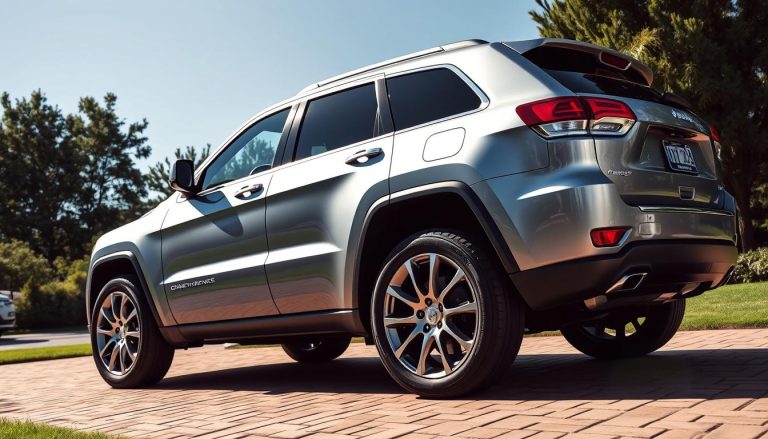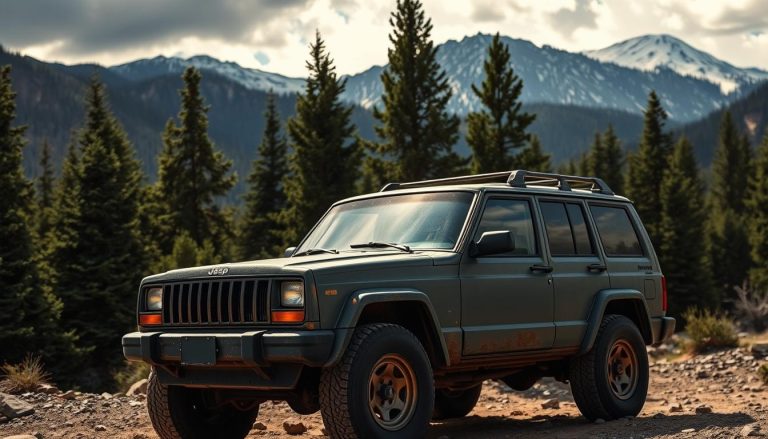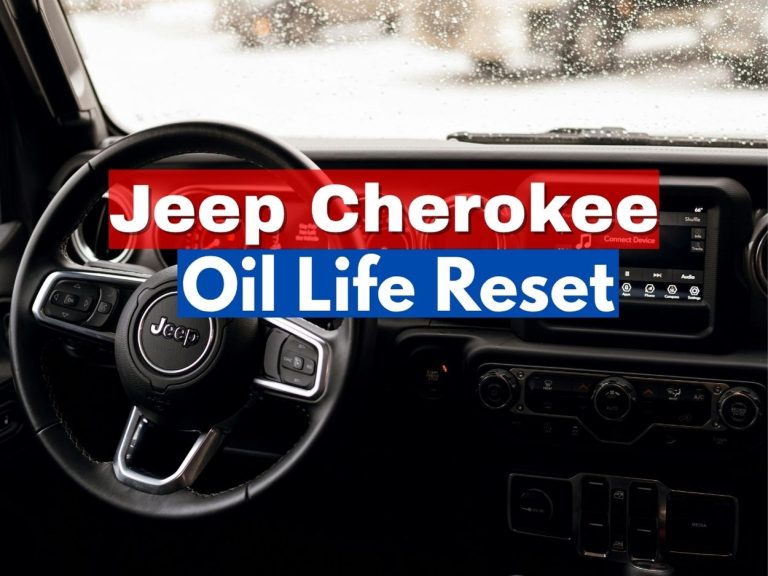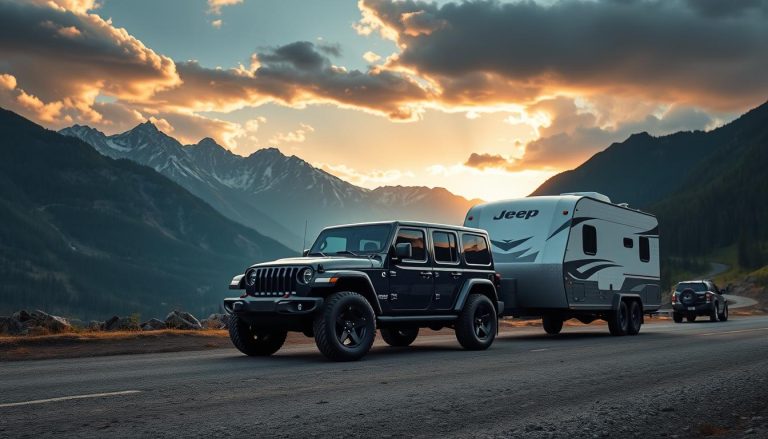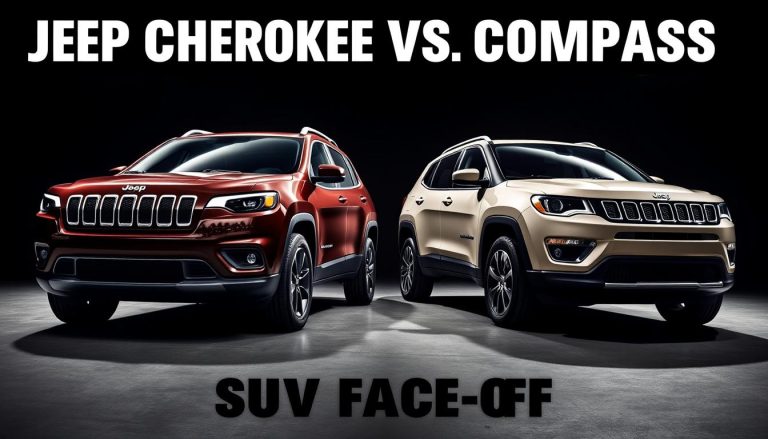Jeep Liberty Years to Avoid – Buyer’s Guide
If you’re shopping for a Jeep Liberty, knowing which years to dodge is key. This guide covers the Jeep Liberty’s run from 2002 to 2012. It highlights the models with most troubles based on buyer feedback, technical faults, and recalls. Our goal is to help you choose wisely by showing which models are good and which ones aren’t.
Let’s delve into the car’s past, pinpointing common problems and offering must-know buying advice. With a blend of technical reviews and hands-on tips, this guide helps both car buffs and regular drivers. You’ll get the essential info needed for a smart buy.
History of the Jeep Liberty
In 2002, the Jeep Liberty hit the market. It was Jeep’s response to the rising demand for compact SUVs. The design was perfect for city driving and off-roading adventures. It showed Jeep’s commitment to creating tough, adaptable vehicles.
The Jeep Liberty was made from 2002 to 2012. Each year, it got some updates but also faced some issues. Still, it was loved by those who enjoy the outdoors and city life.
It’s important to know about the different years of the Jeep Liberty before buying one. Some years are known for being reliable, and others have had mechanical problems. This knowledge can help you make a good decision and be happy with your Jeep.
To wrap up, the Jeep Liberty stood out in the compact SUV market with its unique design and strong build. Its existence was key in expanding Jeep’s range. It met various driving needs and tastes.
Overview of the Jeep Liberty Model
The Jeep Liberty shines with its ability to tackle rough terrain while being perfect for city life. Debuted in the early 2000s, it caught the eye of both adventurers and those who stick to the pavement.
Jeep Liberty Debut and Evolution
The Jeep Liberty evolution started in 2002, taking over from the Jeep Cherokee. It boasted a square shape and a powerful V6 engine. The Liberty proved it was designed for challenging adventures and smooth rides around town. It kept improving with new tech and design changes, staying popular and trusted.
Key Milestones
The Jeep Liberty is known as a reliable SUV thanks to several important achievements:
- 2002: The first Jeep Liberty model was released. It perfectly mixed off-road capability with city driving.
- 2005: Addition of new safety tech like Electronic Stability Control and better brakes.
- 2008: A big makeover that brought a fancier inside and the latest infotainment features, focusing on more comfort and tech.
- 2012: The last year of production, celebrated with special editions that highlighted its fame and success.
Timeline of Production (2002-2012)
The Jeep Liberty, known as the Jeep Cherokee abroad, had a good run from 2002 to 2012. It got better over time with many updates. Here, we’ll look at the main periods in its journey.
2002-2004: Early Models and Issues
In 2002, the Jeep Liberty stood out for its unique look and ability to go off-road. But, it faced some issues early on. Problems included rough transmission performance and early wear of the suspension.
These models also had minor interior issues. These problems were fixed in later updates.
2005-2008: Increased Reliability
From 2005 to 2008, making the Jeep Liberty became better. Changes were made to the transmission and suspension. These fixes reduced earlier issues, marking an improvement phase.
2009-2011: Best Years
The models from 2009 to 2011 are highly praised. This period introduced new safety features and tech updates. It made the Jeep Liberty more reliable and better on fuel.
2012: Final Production Year
2012 was the last year for the Jeep Liberty. It combined all previous enhancements, making it a top choice. After this, the new Jeep Cherokee came in 2013, pushing the brand forward.
Common Issues in Jeep Liberty
The Jeep Liberty is liked by SUV fans, but it’s important for buyers to know about its problems. Issues range from mechanical failures to electronic glitches, impacting the car’s reliability.
Suspension and Transmission Failures
One major issue with the Jeep Liberty is how quickly the suspension parts wear out. This causes a bumpy ride and uneven tire wear. The front lower ball joints and bushings often break down first. The car also faces transmission problems, including gear slippage and total failures, which are expensive to fix.
Engine Problems
Engine issues are big concerns for Jeep Liberty’s reliability. Owners report overheating from water pump failures, head gasket leaks, and broken radiators. Engine performance may drop due to a bad Powertrain Control Module (PCM) or worn-out oxygen sensors. This results in poor gas mileage and higher emissions.
Electrical Faults
Electrical problems are common and frustrating for Jeep Liberty owners. These issues might include broken window regulators, dashboard lights that don’t work right, and doors that don’t lock properly. Unreliable electrical systems can be a big hassle and even pose safety risks if critical parts fail suddenly.
Jeep Liberty Recalls and Concern Areas
The Jeep Liberty is known for its strong design and love for the off-road. But, it has gone through many recalls. These recalls and what they mean matter a lot to those thinking about getting this car.
Major Recalls Overview
The 2002 and 2003 Jeep Liberty models had major issues with their suspension. This problem could make you lose control of the car. The 2004 model’s difference was its risky fuel tank design, increasing the chance of a fire if an accident happened. For the 2006 to 2007 models, the big issue was with airbags that didn’t open right, making accidents more dangerous.
Safety Concerns
Thinking about the safety of the Jeep Liberty is key for potential buyers. The concerns are about many parts:
- Engine stalling
- Failures in the electrical system
- Brake line rust, more so where roads are salted
- Issues coming back with the rear suspension control arms
These problems have led to many recalls and hurt how people see the Jeep Liberty. Buyers should really look into these recalls and safety issues before deciding to buy.
Jeep Liberty Years to Avoid
If you’re looking at buying a used Jeep Liberty, it’s important to know which years to steer clear of. We’ll point out the model years that have had a lot of complaints, reliability issues, and recalls. Knowing this can help you avoid a lot of trouble.
2002 Model Year Issues
The 2002 Jeep Liberty was its first year on the market, and it had its share of problems. Buyers reported issues with the suspension and transmission, leading to many recalls. This model year was also known for electrical problems, which caused a lot of malfunctions.
2004 Model Year Issues
In 2004, the Jeep Liberty faced serious mechanical issues. Many owners complained about the engine stalling and problems with the cooling system. There were also issues with the brakes, which affected the car’s safety and performance.
2006 Model Year Issues
The 2006 Jeep Liberty continued to have engine problems, like oil leaks and sensor failures. Even with attempts to improve it, these problems made it one of the unreliable years. Owners also had a lot of electrical system issues.
2012 Model Year Issues
The 2012 model, which was the last year for the Jeep Liberty, had major issues with the transmission and fuel system. People often complained about rough shifting and fuel pump failures. These problems made the 2012 model unreliable for long-term use.
- 2002: Suspension and transmission issues
- 2004: Engine stalling and braking problems
- 2006: Oil leaks and sensor failures
- 2012: Transmission and fuel system troubles
Pro Tip: Pre-purchase Inspection
When considering buying used Jeep Liberty, a comprehensive pre-purchase inspection is crucial. It helps you know the car’s state and any problems that could cost you later. Here’s what to look for:
First, check the outside. Look for rust, mostly on the bottom and around the wheels. Also, examine the paint and body for signs that might show past accidents or repairs.
Now, look at the suspension and transmission. On a test drive, notice how the car feels. Odd noises or steering issues could mean something’s wrong. Suspension and transmission problems can be sneaky, so get them checked by an expert.
Under the hood, look for engine leaks, strange smells, and check if belts and hoses are worn out. Used Jeep Liberties often have electrical issues. Make sure all lights, indicators, and electronic systems work right.
Last, examine the car’s history for any major recalls. Check that these problems were fixed. A detailed pre-purchase inspection, ideally by a qualified mechanic, lowers risks when buying used Jeep Liberty. It gives you confidence and peace of mind.
General Performance and Reliability Ratings
The Jeep Liberty is a compact SUV that gets mixed reviews. Owners and experts look at its performance and reliability differently. We’ll check out what they say to get the full picture.
Owner Reviews and Ratings
Many owners talk about the Jeep Liberty’s ruggedness and how good it is off-road. They often mention its:
- Solid off-road handling
- Powerful engine performance
- Comfortable driving experience
But, some early models had issues. People mainly report problems with:
- Suspension and transmission
- Electrical faults
Later models, after 2005, usually get better reviews for Jeep Liberty reliability.
Professional Reviews and Ratings
Experts praise the Jeep Liberty for its solid 4×4 system and tough build. They do point out drawbacks like:
- Moderate fuel efficiency
- Interior design quality
Later models show improvements in reliability, agreeing with owner feedback. So, Jeep Liberty reliability ratings have improved over time.
Here’s a quick comparison of what owners and pros think:
| Aspect | Owners’ Perspective | Professionals’ Perspective |
|---|---|---|
| Overall Performance | Good off-road, powerful engine | Excellent 4×4, sturdy build |
| Reliability | Mixed, better after 2005 | Improved in later models |
| Common Issues | Transmission, suspension, electrical | Fuel efficiency, interior quality |
Main Differences Between Trims and Models
The Jeep Liberty has different trims for various driving needs. Knowing the Jeep Liberty trims and what sets them apart is key. Let’s explore the differences between the Sport, Limited, and Renegade models.
Sport, Limited, and Renegade
Each Jeep Liberty trim brings something special for different kinds of drivers. Let’s break it down:
- Sport: This is the basic model. It has the essential features for those who want usefulness and reliability. It’s known for its simple design and functionality.
- Limited: A step up from the Sport, the Limited offers more, like better interior materials and more tech options. It’s for drivers who want comfort along with their utility.
- Renegade: For those who love adventure, the Renegade trim has things like off-road tires and skid plates. It’s ready for both everyday use and off-road journeys.
Special Editions
Jeep also made special editions of the Liberty with unique qualities. These editions could have specific paint colors, special interior designs, and extra performance features. Collectors and fans often look for these for their uniqueness among the Jeep Liberty model differences.
Knowing about the Jeep Liberty trims and special editions helps pick the right model for your life and driving needs.
Long-term Maintenance Tips for Jeep Liberty
Keeping your Jeep Liberty running smoothly for many years is key. This Jeep Liberty maintenance guide gives useful tips for taking care of your car. By following these suggestions and a regular replacement plan, you can extend your Jeep Liberty’s life.
Regular Maintenance Checklist
To take good care of your Jeep Liberty, stick to a regular maintenance routine. Here is a simple checklist to keep in mind:
- Oil Change: Every 3,000 to 5,000 miles
- Brake Inspection: Every 10,000 miles
- Tire Rotation: Every 7,500 miles
- Fluids Check: Every 5,000 miles – include coolant, transmission, and brake fluid
- Battery Check: Annually
- Air Filter Replacement: Every 15,000 miles
- Alignment Check: Annually
Common Parts Replacement Schedule
It’s vital to replace worn parts before they fail as part of your Jeep Liberty maintenance guide. Follow this schedule for replacements:
| Part | Recommended Replacement Interval |
|---|---|
| Timing Belt | Every 100,000 miles |
| Brake Pads | Every 20,000 to 50,000 miles |
| Spark Plugs | Every 30,000 miles |
| Fuel Filter | Every 30,000 miles |
| Transmission Fluid | Every 60,000 miles |
By sticking to this Jeep Liberty maintenance guide, your Jeep will stay reliable for the long run. These steps enhance your driving experience and maintain your vehicle’s value and performance.
Owner Experiences and Reviews
Learning from Jeep Liberty owners gives us real insights into how it performs. We’ve gathered both good and critical feedback from real users.
Positive Feedback
Many owners love the Jeep Liberty for its off-road skills and solid build. Let’s see what they often say:
- Off-road Performance: Quite a few admire how well the Jeep Liberty handles tough terrains. They find it reliable for exciting drives.
- Comfortable Ride: The comfy seats and roomy inside make long trips much nicer, according to owners.
- Durability: Some users say their Jeep Liberty lasts a long time. They’ve driven it for over 150,000 miles without big problems.
Critical Feedback
But, the Jeep Liberty isn’t perfect. Here’s some balanced critique from users:
- Fuel Efficiency: Lower fuel efficiency, especially in the city, bothers quite a few users.
- Maintenance Costs: A number of owners mention paying more than expected on upkeep, mainly for suspension and transmission work.
- Electrical Problems: Issues with power windows and dashboard lights are common complaints in reviews.
Considering these reviews gives buyers a complete picture of the Jeep Liberty. It helps them decide if it’s the right car for them.
Looking for a Used Jeep Liberty? What to Check
Thinking about getting a used Jeep Liberty? Make sure to inspect it well. This means looking inside, outside, and at the miles it has traveled.
Exterior and Interior Inspection
Start with the SUV’s outside look. Find any rust, dents, or paint changes. These could mean the Jeep had accidents or wasn’t taken care of well. Focus on:
- Condition of the tires
- Functionality of the headlights and tail lights
- Integrity of the windshield and windows
Then, check the inside. Look for damage to the seats, dashboard, and floor. Test all electronics like the stereo and air conditioning. Search for rust or water damage under the seats and in the trunk. This could signal big problems.
Mileage Considerations
When you buy a used Jeep Liberty, how much it’s been driven matters. More miles usually means more wear. But, good upkeep can help a lot. Check the service history for things like:
- Oil changes
- Tire rotations
- Brake inspections and replacements
A Jeep with lower miles isn’t always better if it wasn’t cared for right. Always match the miles you see with the car’s records to stop scams. Putting together these checks helps you choose wisely.
Specific Problems to Monitor
Buying a Jeep Liberty means you should know about some issues to save time and money. There are two main issues to watch out for: electrical problems and window regulator troubles.
Electrical Issues
Electrical issues are widespread with the Jeep Liberty. They range from small annoyances to big problems affecting the car’s performance. Drivers have faced issues like broken dashboard lights, power windows not working, and computer system errors.
Window Regulator Issues
Window regulator problems are also common. Owners often deal with windows that won’t stay up or down. This happens a lot in older models. It can be a safety risk and very annoying if not fixed.
Knowing these issues with the Jeep Liberty and fixing them can make your car better. It can also prevent expensive repairs later.
Jeep Liberty Off-road Capabilities
The Jeep Liberty is known for its strong off-road abilities, perfect for adventure lovers. Let’s look into its 4×4 skills and check out reviews from off-road test drives. This way, we can see if it lives up to the tough expectations.
4×4 System Performance
The Liberty comes with Jeep’s famous 4×4 systems, the Command-Trac and the Selec-Trac. Both offer great power for better grip and steadiness on different grounds. This makes off-roading in a Jeep Liberty a powerful experience.
Command-Trac features:
- Part-time 4WD system
- 2WD for normal driving
- 4WD high range for mild off-road use
- 4WD low range for tough off-road situations
The Selec-Trac system has a full-time 4WD mode. It switches easily between regular and off-road driving. This gives better control and handling, very helpful in changing weather.
| 4×4 System | Mode | Use Case |
|---|---|---|
| Command-Trac | 2WD | Normal driving conditions |
| Command-Trac | 4WD High | Light off-road |
| Command-Trac | 4WD Low | Heavy off-road |
| Selec-Trac | Full-time 4WD | Variable terrains |
Off-road Reviews
Owners and experts both say the Jeep Liberty performs well off-road. They like its mobility on difficult terrains like rocky and muddy trails. Its strong suspension and good ground distance are often praised too. The 4×4 abilities are seen as reliable, giving drivers the confidence to overcome many challenges.
Tests of the Liberty in real-life off-road conditions show:
- Rock Crawling: The Liberty easily gets through tough rocky areas with its sturdy 4×4 system.
- Mud and Snow: The Selec-Trac system’s full-time 4WD mode works well on slick and sticky grounds.
- Trail Riding: Offers a smooth trip on bumpy paths, thanks to its solid suspension and traction control.
In short, the Jeep Liberty is a reliable choice for off-road fans. It has the right 4×4 features and flexibility Jeep is known for. Whether for hard trails or weekend fun, the Liberty’s abilities get thumbs up.
How Many Miles Can a Jeep Liberty Last?
When trying to figure out a Jeep Liberty’s lifespan, we need to think about many things. These include how well it’s taken care of, driving conditions, and the car’s history. On the whole, a Jeep Liberty that is well looked after can easily reach between 200,000 to 300,000 miles.
Average Lifespan
Usually, Jeep Liberty owners see their cars last from 200,000 to 300,000 miles. Doing regular check-ups is crucial. By following the maker’s suggested service plan, like getting oil changes and fixing things on time, you can help your car last even longer.
High-mileage Examples
Many Jeep Liberty owners have seen their cars last way past 300,000 miles because they took good care of them. These cars needed regular check-ups and quality parts to reach such high miles.

| Model Year | Miles Achieved | Owner Tips |
|---|---|---|
| 2003 | 310,000 | Regular fluid checks, timely belt replacements |
| 2005 | 295,000 | Consistent oil changes, use of OEM parts |
| 2008 | 280,000 | Frequent brake inspections, maintaining proper tire pressure |
These high-mileage stories prove that a well-maintained Jeep Liberty can be dependable. It can last for many more years and miles than expected.
Other Jeep Models to Consider
Looking at other Jeep models gives you more choices to find your ideal vehicle. The Jeep Cherokee and Wrangler are top picks, each with its own benefits. When comparing the Jeep Cherokee vs. Jeep Liberty, knowing their differences helps in making a good choice.
Jeep Cherokee
The Jeep Cherokee shines as a flexible and dependable SUV. It offers a nicer interior and better tech than the Jeep Liberty. It’s great for both city driving and long road trips thanks to its fuel efficiency.
The Cherokee also comes in various versions, like the Trailhawk. This means it fits many lifestyles, from daily drives to wild adventures.
Jeep Wrangler
The Jeep Wrangler is all about tough off-road ability. It stands out with its unique look and the option to remove doors and roof panels, unlike the Jeep Liberty. The Wrangler may not be as comfy or gas-saving as the Cherokee, but it’s unbeatable off the beaten path.
It’s the go-to for adventure lovers who prize exploring nature. For those weighing the Jeep Cherokee vs. Jeep Liberty, the Wrangler offers a distinct and appealing choice.
Conclusion
We’ve covered the Jeep Liberty’s journey, its problems, and its performance highs and lows. The tough years were 2002, 2004, 2006, and 2012. But from 2009 to 2011, the Liberty proved more dependable. These insights are crucial for buyers wanting to know the car’s history over ten years of making.
This guide has shared tips on checking the car before buying and spotting common issues. It helps Jeep Liberty fans and drivers know what to expect from this SUV. This includes its ability to tackle off-road adventures and differences between models. By studying the Jeep Liberty’s maintenance and potential problems, owners can enjoy a smoother ride.
When thinking about buying, remember that some years are better than others. If you’re looking elsewhere, the Cherokee and Wrangler are great Jeep alternatives. They have different features to consider. This overview helps you make a smart choice, whether it’s sticking with the Liberty or exploring other Jeeps. The aim is to give you confidence in your car choices.
FAQs
What are the Jeep Liberty years to avoid?
Stay away from the 2002, 2004, 2006, and 2012 Jeep Liberty models. They have many mechanical and reliability issues.
What common issues should I be aware of in a Jeep Liberty?
Jeep Liberty models often have problems with the suspension and transmission. There are also engine and electrical issues.
Are there any major recalls on the Jeep Liberty?
Yes, the Jeep Liberty has seen several major recalls. Issues with the fuel system and airbags are the key reasons.
How reliable is the Jeep Liberty overall?
Jeep Liberty’s reliability changes with each model year. Some years get high marks, but others have big concerns. This is true especially for the first models and the last made in 2012.
What should I look for during a pre-purchase inspection of a used Jeep Liberty?
Check the suspension, transmission, engine, and electrical systems during inspection. Look out for signs that suggest former repairs or recalls.
How does the Jeep Liberty perform off-road?
The Jeep Liberty claims good off-road ability with its strong 4×4 system. Reviews support its off-road performance. But, some models may not be as reliable or durable.
What are the main differences between the Sport, Limited, and Renegade trims?
The Sport is the basic trim, offering key features. The Limited adds luxury and tech. The Renegade is best for off-roading. Some special editions come with exclusive packages and features.

